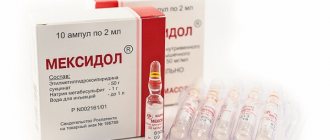Many antibiotics have universal action. For example, the drug "Cifran" is used to treat bacterial infections of the throat, mouth, nose, abdominal organs, urinary tract and other systems. The product is affordable and gives a fairly good effect.
Antibiotic "Cifran": composition and description
"Cifran" is an antibiotic whose active ingredient is ciprofloxacin in the form of lactate. Additional components are silica gel, sodium salts, magnesium salts, talc and others. Available in the form of tablets and solution. Each ml of solution contains 2 mg of active substance.
The antibiotic affects different types of bacteria - gram-positive and gram-negative. They destroy microorganisms resistant to penicillin, cephalosporin and other active substances. Moreover, suppression of bacteria is observed in all tissues and organs. As a result, inflammatory processes are suppressed and gradual recovery after infection occurs.
The product is stored under normal room conditions at a temperature of no more than 25 degrees. Direct sunlight should be excluded. Access for children is prohibited. The shelf life is 2 years from the date of production. After this time, you should not take tablets or solution.
Cifran, 10 pcs., 250 mg, film-coated tablets
Severe infections, staphylococcal infections and infections caused by gram-positive and anaerobic bacteria
When treating severe infections, staphylococcal infections and infections caused by anaerobic bacteria, ciprofloxacin should be used in combination with appropriate antibacterial agents.
Infections caused by Streptococcus pneumoniae
Ciprofloxacin is not recommended for the treatment of infections caused by Streptococcus pneumoniae due to its limited effectiveness against the pathogen.
Genital tract infections
For genital infections suspected of being caused by strains of Neisseria gonorrhoeae resistant to fluoroquinolones, information about local resistance to ciprofloxacin should be taken into account and the sensitivity of the pathogen should be confirmed by laboratory tests.
Urinary tract infections
Resistance to fluoroquinolones in Escherichia coli, the most common pathogen causing urinary tract infections, varies depending on the region of the Russian Federation. When prescribing, it is recommended to take into account the local prevalence of Escherichia coli to fluoroquinolones.
Heart disorders
Ciprofloxacin has an effect on prolongation of the QT interval (see section "Side effects"). Given that women have a longer average QT interval compared to men, they are more sensitive to drugs that cause QT prolongation. Elderly patients also have increased sensitivity to the effects of drugs that prolong the QT interval. Ciprofloxacin should be used with caution in combination with drugs that prolong the QT interval (for example, class IA and III antiarrhythmic drugs, tricyclic antidepressants, macrolides and antipsychotic drugs) (see section "Interaction with other drugs"), or in patients with increased risk of QT prolongation or development of cardiac arrhythmias (eg, congenital long QT syndrome, uncorrelated electrolyte imbalances such as hypokalemia or hypomagnesemia, and cardiac conditions such as heart failure, myocardial infarction, bradycardia).
Use in children
It was found that ciprofloxacin, like other drugs of this class, causes arthropathy of large joints in animals. When analyzing the current data on the safety of ciprofloxacin in children under 18 years of age, most of whom have cystic fibrosis, no connection has been established between cartilage or joint damage with the drug. It is not recommended to use ciprofloxacin in children for the treatment of diseases other than the treatment of complications of pulmonary cystic fibrosis (in children from 5 to 17 years old) associated with Pseudomonas aeruginosa and for the treatment and prevention of pulmonary anthrax (after suspected or proven infection with Bacillus anthracis).
Hypersensitivity
Sometimes, after taking the first dose of ciprofloxacin, hypersensitivity to the drug may develop (see section “Side effects”), including allergic reactions, which should be reported to your doctor immediately. In rare cases, after the first use, anaphylactic reactions up to anaphylactic shock may occur. In these cases, the use of ciprofloxacin should be stopped immediately and appropriate treatment should be instituted.
Gastrointestinal tract
If severe and prolonged diarrhea occurs during or after treatment with ciprofloxacin, the diagnosis of pseudomembranous colitis should be excluded, which requires immediate discontinuation of the drug and the appointment of appropriate treatment (vancomycin orally at a dose of 250 mg 4 times a day). In this situation, the use of drugs that suppress intestinal motility is contraindicated.
Hepatobiliary system
Cases of liver necrosis and life-threatening liver failure have been reported with the use of ciprofloxacin. If you have the following signs of liver disease, such as anorexia, jaundice, dark urine, itching, a painful abdomen, you should stop taking ciprofloxacin (see section “Side effects”).
Patients taking ciprofloxacin who have had liver disease may experience a temporary increase in the activity of liver transaminases and alkaline phosphatase or cholestatic jaundice.
Musculoskeletal system
Patients with myasthenia gravis should use ciprofloxacin with caution, as exacerbation of symptoms may occur.
At the first signs of tendinitis (painful swelling in the joint area, inflammation), the use of ciprofloxacin should be stopped and physical activity should be avoided, because There is a risk of tendon rupture, and consult a doctor.
When taking ciprofloxacin, cases of tendinitis and tendon rupture (mainly the Achilles tendon), sometimes bilaterally, may occur within the first 48 hours after the start of therapy. Inflammation and rupture of the tendon may occur even several months after stopping treatment with ciprofloxacin. In elderly patients and in patients with tendon diseases who are simultaneously treated with corticosteroids. There is an increased risk of tendinopathy.
Ciprofloxacin should be used with caution in patients with a history of tendon diseases associated with quinolones.
Nervous system
Ciprofloxacin, like other fluoroquinolones, can provoke seizures and lower the seizure threshold. Patients with epilepsy and previous diseases of the central nervous system (for example, a decrease in the seizure threshold, a history of seizures, cerebrovascular accidents, organic brain lesions or stroke) due to the risk of developing adverse reactions from the central nervous system. ciprofloxacin should be used only in cases where the expected clinical effect outweighs the possible risk of side effects of the drug.
Cases of status epilepticus have been reported when using ciprofloxacin (see section "Side effects"). If seizures occur, use of the drug should be discontinued. There is a risk of developing mental reactions that may occur even after a single dose of ciprofloxacin. In rare cases, depression or psychotic reactions may progress to suicidal thoughts and suicide attempts, including completed ones (see section "Side effects"). In case of development of any side effects from the central nervous system, including mental disorders, it is necessary to immediately discontinue the drug Cifran® and begin appropriate therapy. In these cases, it is recommended to switch to therapy with another antibiotic other than fluoroquinolones. if possible.
In patients taking fluoroquinolones. including ciprofloxacin, cases of sensory or sensorimotor polyneuropathy and hypoesthesia have been reported. dysesthesia or weakness. If symptoms such as pain, burning, tingling, numbness, or weakness occur, patients should inform their doctor before continuing to use the drug.
Skin
Photosensitivity reactions may occur when taking ciprofloxacin, so patients should avoid contact with direct sunlight and UV light. Treatment should be discontinued if symptoms of photosensitivity are observed (for example, changes in the skin reminiscent of sunburn, see section “Side effects”).
Dysglycemia
As with other fluoroquinolones, changes in blood glucose concentrations, including hypo- and hyperglycemia, are possible when using ciprofloxacin. During therapy with ciprofloxacin, dysglycemia may more often occur in elderly patients and patients with diabetes mellitus receiving concomitant therapy with oral hypoglycemic drugs (for example, sulfonylureas) or insulin. When using ciprofloxacin in such patients, the risk of developing hypoglycemia, including hypoglycemic coma, increases. It is necessary to inform patients about the symptoms of hypoglycemia (confusion, dizziness, ravenous appetite, headache, nervousness, palpitations or increased pulse rate, pale skin, perspiration, trembling, weakness). If the patient develops hypoglycemia, treatment with ciprofloxacin should be stopped immediately and appropriate therapy should be initiated. In these cases, it is recommended to switch to therapy with an antibiotic other than a fluoroquinolone, if possible. When treating with ciprofloxacin in elderly patients and patients with diabetes mellitus, careful monitoring of blood glucose concentrations is recommended.
Cytochrome P450
It is known that ciprofloxacin is a moderate inhibitor of CYP 450 1A2 isoenzymes. Caution should be exercised when simultaneous use of ciprofloxacin and drugs metabolized by these enzymes, such as tizanidine, theophylline, methylxanthine. caffeine, duloxetine. ropinirole, clozapine, olanzapine, agomelatine. since an increase in the concentration of these drugs in the blood plasma, due to the inhibition of their metabolism by ciprofloxacin, can cause specific undesirable reactions. The simultaneous use of ciprofloxacin and tizanidine is contraindicated.
To avoid the development of crystalluria, it is not permissible to exceed the recommended daily dose; sufficient fluid intake and maintaining an acidic urine reaction are also necessary.
In vitro, ciprofloxacin may interfere with the bacteriological study of Mycobacterium tuberculosis, inhibiting its growth, which can lead to false negative results when diagnosing this pathogen in patients taking ciprofloxacin.
Indications and contraindications
The drug is prescribed by a doctor to treat infections associated with pathogenic bacteria. There are quite a lot of indications for use. The medicine is used in the presence of diseases of the respiratory system:
- pneumonia;
- bronchiectasis pathology;
- cystic fibrosis;
- bronchitis of various forms - acute, chronic;
Throat and ear diseases:
- pharyngitis;
- otitis of various origins;
- frontal sinusitis;
- throat pathology tonsillitis;
- sinusitis disease.
Pathologies of the kidneys and urinary tract:
- cystitis;
- chancroid;
- endometritis;
- adnexitis;
- pyelonephritis;
- tubular abscess;
- salpingitis disease;
- infectious pathology chlamydia;
- oophoritis;
- gonorrhea.
Infectious pathologies of organs located in the abdominal cavity::
- salmonellosis;
- peritonitis;
- cholera;
- typhoid fever;
- shigellosis.
The drug can also be prescribed for the treatment of osteomyelitis, sepsis, skin ulcers (if they are infected), septic arthritis, burns of various degrees, phlegmon, bedsores, dysentery and empyema.
The product has few contraindications - “Cifran” is not recommended for use only in certain cases:
- pregnancy at all stages;
- breastfeeding period;
- individual intolerance to the active or auxiliary components, allergic reactions.
Description of the drug CIFRAN
When treating severe infections, staphylococcal infections and infections caused by anaerobic bacteria, ciprofloxacin should be used in combination with appropriate antibacterial agents.
Ciprofloxacin is not recommended for the treatment of infections caused by Streptococcus pneumoniae due to its limited effectiveness against the pathogen.
For genital infections suspected of being caused by strains of Neisseria gonorrhoeae resistant to fluoroquinolones, information about local resistance to ciprofloxacin should be taken into account and the sensitivity of the pathogen should be confirmed by laboratory tests.
Resistance to fluoroquinolones in Escherichia coli, the most common pathogen causing urinary tract infections, varies depending on the region of the Russian Federation. When prescribing, it is recommended to take into account the local prevalence of Escherichia coli resistance to fluoroquinolones.
Ciprofloxacin has an effect on prolonging the QT interval. Given that women have a longer average QT interval compared to men, they are more sensitive to drugs that cause QT prolongation. Elderly patients also have increased sensitivity to the effects of drugs that prolong the QT interval. Use ciprofloxacin with caution in combination with drugs that prolong the QT interval (e.g., Class IA and III antiarrhythmics, tricyclic antidepressants, macrolides, and antipsychotics) or in patients at increased risk for QT prolongation or QT syndrome (e.g., congenital long QT syndrome). QT interval, corrected electrolyte imbalances such as hypokalemia or hypomagnesemia, and heart disease such as heart failure, myocardial infarction, bradycardia).
Sometimes, after taking the first dose of ciprofloxacin, hypersensitivity reactions may develop, incl. allergic reactions. In rare cases, after the first use, anaphylactic reactions up to anaphylactic shock may occur. In these cases, the use of ciprofloxacin should be stopped immediately and appropriate treatment should be instituted.
If severe and prolonged diarrhea occurs during or after treatment with ciprofloxacin, the diagnosis of pseudomembranous colitis should be excluded, which requires immediate discontinuation of the drug and the appointment of appropriate treatment (vancomycin orally at a dose of 250 mg 4 times a day). In this situation, the use of drugs that suppress intestinal motility is contraindicated.
Cases of liver necrosis and life-threatening liver failure have been reported with the use of ciprofloxacin. If you have any of the following signs of liver disease, such as anorexia, jaundice, dark urine, itching, or a painful abdomen, you should stop taking ciprofloxacin. Patients taking ciprofloxacin with a history of liver disease may experience a transient increase in liver transaminases and alkaline phosphatase or cholestatic jaundice.
In patients with myasthenia gravis, ciprofloxacin should be used with caution, because possible exacerbation of symptoms.
At the first signs of tendinitis (painful swelling in the joint area, inflammation), the use of ciprofloxacin should be stopped and physical activity should be avoided, because There is a risk of tendon rupture, and consult a doctor. When taking ciprofloxacin, cases of tendinitis and tendon rupture (mainly the Achilles tendon), sometimes bilaterally, may occur within the first 48 hours after the start of therapy. Inflammation and rupture of the tendon may occur even several months after stopping treatment with ciprofloxacin. Elderly patients, patients with renal failure, and organ transplant patients concomitantly receiving corticosteroid treatment have an increased risk of tendinopathy. Ciprofloxacin should be used with caution in patients with a history of tendon diseases associated with quinolones.
Ciprofloxacin, like other fluoroquinolones, can provoke seizures and lower the seizure threshold. In patients with epilepsy and a history of central nervous system diseases (for example, a decrease in the seizure threshold, a history of seizures, cerebrovascular accidents, organic brain lesions or stroke) due to the risk of developing adverse reactions from the central nervous system, ciprofloxacin should be used only in cases when the expected clinical effect outweighs the possible risk of side effects. If seizures occur, use of ciprofloxacin should be discontinued.
Psychiatric reactions may occur even after the first use of fluoroquinolones, including ciprofloxacin. In rare cases, depression or psychotic reactions can progress to suicidal thoughts and suicide attempts, incl. completed. In case of development of any side effects from the central nervous system, including mental disorders, ciprofloxacin should be immediately discontinued and appropriate therapy should be started. In these cases, it is recommended to switch to therapy with an antibiotic other than a fluoroquinolone, if possible.
Cases of sensory or sensorimotor polyneuropathy, hypoesthesia, dysesthesia, or weakness have been reported in patients taking fluoroquinolones, including ciprofloxacin. If symptoms such as pain, burning, tingling, numbness, or weakness occur, patients should inform their doctor before continuing to use the drug.
Photosensitivity reactions may occur when taking ciprofloxacin, so patients should avoid contact with direct sunlight and UV light. Treatment should be discontinued if symptoms of photosensitivity are observed (for example, changes in the skin reminiscent of sunburn).
It is known that ciprofloxacin is a moderate inhibitor of CYP1A2 isoenzymes. Caution should be exercised when simultaneous use of ciprofloxacin and drugs metabolized by these enzymes, such as theophylline, methylxanthine, caffeine, duloxetine, ropinirole, clozapine, olanzapine, agomelatine, because An increase in the concentration of these drugs in the blood serum, due to inhibition of their metabolism by ciprofloxacin, may cause specific adverse reactions. The simultaneous use of ciprofloxacin and tizanidine is contraindicated.
To avoid the development of crystalluria, it is unacceptable to exceed the recommended daily dose; sufficient fluid intake and maintaining an acidic urine reaction are also necessary.
In vitro, ciprofloxacin may interfere with the bacteriological study of Mycobacterium tuberculosis, inhibiting its growth, which can lead to false negative results when diagnosing this pathogen in patients taking ciprofloxacin.
As with other fluoroquinolones, changes in blood glucose concentrations, including hypo- and hyperglycemia, are possible when using ciprofloxacin. During therapy with ciprofloxacin, dysglycemia may occur more often in elderly patients and patients with diabetes mellitus receiving concomitant therapy with oral hypoglycemic drugs (for example, sulfonylureas) or insulin. When using ciprofloxacin in such patients, the risk of developing hypoglycemia, including hypoglycemic coma, increases. It is necessary to inform patients about the symptoms of hypoglycemia (confusion, dizziness, increased appetite, headache, nervousness, palpitations or increased pulse rate, pale skin, perspiration, trembling, weakness). If the patient develops hypoglycemia, treatment with ciprofloxacin should be stopped immediately and appropriate therapy should be initiated. In these cases, it is recommended to switch to therapy with an antibiotic other than a fluoroquinolone, if possible. When treating with ciprofloxacin in elderly patients and patients with diabetes mellitus, careful monitoring of blood glucose concentrations is recommended.
Epidemiological studies have reported an increased risk of aortic aneurysm and aortic dissection after taking fluoroquinolones, especially in elderly patients.
Therefore, fluoroquinolones should be used only after careful benefit/risk assessment and consideration of other treatment options in patients with a family history of aortic aneurysm or in patients with a known aortic aneurysm and/or aortic dissection or in the presence of other risk factors or conditions predisposing to the development of aortic aneurysm or aortic dissection (for example, Marfan syndrome, vascular Ehlers-Danlos syndrome, Takayasu arteritis, giant cell arteritis, Behçet's disease, hypertension, atherosclerosis).
In case of sudden pain in the abdomen, chest, or back, patients should immediately consult a doctor at the emergency room.
Impact on the ability to drive vehicles and machinery
Fluoroquinolones, including ciprofloxacin, may impair the ability of patients to drive a car and engage in other potentially hazardous activities that require increased attention and speed of psychomotor reactions due to their effect on the central nervous system.
After using eye drops, the clarity of visual perception may decrease, so immediately after instillation it is not recommended to drive a car or engage in activities that require increased attention and speed of psychomotor reactions.
Side effects
Side effects may occur when taking the drug:
- decreased blood pressure;
- arrhythmia;
- increased heart rate;
- nausea;
- loss of appetite;
- stomach ache;
- diarrhea;
- cholestatic jaundice;
- increased anxiety;
- headaches;
- sleep problems;
- increased fatigue;
- pain perception disorders;
- tinnitus;
- taste disorders;
- hematuria;
- glomerulonephritis;
- crystallurgy;
- dysuria;
- interstitial type nephritis.
Allergic reactions are also possible - urticaria, fever. If such symptoms occur, treatment should be stopped. You will need to consult a doctor - the drug may need to be changed.
Instructions for use of tablets "Cifran"
The drug is taken on an empty stomach, since in this case the therapeutic effect will be maximum. The dosage depends on the disease:
- urinary tract diseases (without complications): 250 mg of active substance every 12 hours;
- prostatitis, urinary tract diseases with complications – 500 mg every 12 hours;
- diseases of the throat, nose, pathologies of the respiratory system, as well as typhoid fever - 500 mg every 12 hours.
The drug "Cifran ST" is taken after meals - do not chew the capsules, wash it down with plenty of water. The standard dosage is 250-300 mg of the active substance every 12 hours.
The drug "Cifran OD" is used before meals. Standard dosage – 250 mg of active substance every 8 or every 12 hours (i.e. 3 or 2 times a day, respectively)
In case of overdose, pronounced adverse reactions appear. In this case, the intake is suspended and a large amount of water is taken. If necessary, symptomatic treatment is indicated.
Attention!
During treatment, you should drink water regularly to prevent dehydration. You should also avoid prolonged exposure to the sun and tanning.
Cifran®
Severe infections, staphylococcal infections and infections caused by gram-positive and anaerobic bacteria
When treating severe infections, staphylococcal infections and infections caused by anaerobic bacteria, ciprofloxacin should be used in combination with appropriate antibacterial agents.
Infections caused by Streptococcus pneumoniae
Ciprofloxacin is not recommended for the treatment of infections caused by Streptococcus pneumoniae due to its limited effectiveness against the pathogen.
Genital tract infections
For genital infections suspected of being caused by strains of Neisseria gonorrhoeae resistant to fluoroquinolones, information about local resistance to ciprofloxacin should be taken into account and the sensitivity of the pathogen should be confirmed by laboratory tests. Urinary tract infections
Resistance to fluoroquinolones in Escherichia coli, the most common pathogen causing urinary tract infections, varies depending on the region of the Russian Federation. When prescribing, it is recommended to take into account the local prevalence of Escherichia coli to fluoroquinolones.
Heart disorders
Ciprofloxacin has an effect on prolongation of the QT interval (see section "Side effects"). Given that women have a longer average QT interval compared to men, they are more sensitive to drugs that cause QT prolongation. Elderly patients also have increased sensitivity to the effects of drugs that prolong the QT interval. Ciprofloxacin should be used with caution in combination with drugs that prolong the QT interval (for example, class IA and III antiarrhythmic drugs, tricyclic antidepressants, macrolides and antipsychotic drugs) (see section "Interaction with other drugs"), or in patients with increased risk of QT prolongation or development of cardiac arrhythmias (eg, congenital long QT syndrome, uncorrelated electrolyte imbalances such as hypokalemia or hypomagnesemia, and cardiac conditions such as heart failure, myocardial infarction, bradycardia).
Use in children
It was found that ciprofloxacin, like other drugs of this class, causes arthropathy of large joints in animals. When analyzing the current data on the safety of ciprofloxacin in children under 18 years of age, most of whom have cystic fibrosis, no connection has been established between cartilage or joint damage with the drug. It is not recommended to use ciprofloxacin in children for the treatment of diseases other than the treatment of complications of pulmonary cystic fibrosis (in children from 5 to 17 years old) associated with Pseudomonas aeruginosa and for the treatment and prevention of pulmonary anthrax (after suspected or proven infection with Bacillus anthracis).
Hypersensitivity
Sometimes, after taking the first dose of ciprofloxacin, hypersensitivity to the drug may develop (see section “Side effects”), including allergic reactions, which should be reported to your doctor immediately. In rare cases, after the first use, anaphylactic reactions up to anaphylactic shock may occur. In these cases, the use of ciprofloxacin should be stopped immediately and appropriate treatment should be instituted.
Gastrointestinal tract
If severe and prolonged diarrhea occurs during or after treatment with ciprofloxacin, the diagnosis of pseudomembranous colitis should be excluded, which requires immediate discontinuation of the drug and the appointment of appropriate treatment (vancomycin orally at a dose of 250 mg 4 times a day). In this situation, the use of drugs that suppress intestinal motility is contraindicated.
Hepatobiliary system
Cases of liver necrosis and life-threatening liver failure have been reported with the use of ciprofloxacin. If you have the following signs of liver disease, such as anorexia, jaundice, dark urine, itching, a painful abdomen, you should stop taking ciprofloxacin (see section “Side effects”).
Patients taking ciprofloxacin who have had liver disease may experience a temporary increase in the activity of liver transaminases and alkaline phosphatase or cholestatic jaundice.
Musculoskeletal system
Patients with myasthenia gravis should use ciprofloxacin with caution, as exacerbation of symptoms may occur.
At the first signs of tendinitis (painful swelling in the joint area, inflammation), the use of ciprofloxacin should be stopped and physical activity should be avoided, because There is a risk of tendon rupture, and consult a doctor.
When taking ciprofloxacin, cases of tendinitis and tendon rupture (mainly the Achilles tendon), sometimes bilaterally, may occur within the first 48 hours after the start of therapy. Inflammation and rupture of the tendon may occur even several months after stopping treatment with ciprofloxacin. In elderly patients and in patients with tendon diseases who are simultaneously treated with corticosteroids. There is an increased risk of tendinopathy.
Ciprofloxacin should be used with caution in patients with a history of tendon diseases associated with quinolones.
Nervous system
Ciprofloxacin, like other fluoroquinolones, can provoke seizures and lower the seizure threshold. Patients with epilepsy and previous diseases of the central nervous system (for example, a decrease in the seizure threshold, a history of seizures, cerebrovascular accidents, organic brain lesions or stroke) due to the risk of developing adverse reactions from the central nervous system. ciprofloxacin should be used only in cases where the expected clinical effect outweighs the possible risk of side effects of the drug.
Cases of status epilepticus have been reported when using ciprofloxacin (see section "Side effects"). If seizures occur, use of the drug should be discontinued. There is a risk of developing mental reactions that may occur even after a single dose of ciprofloxacin. In rare cases, depression or psychotic reactions may progress to suicidal thoughts and suicide attempts, including completed ones (see section "Side effects"). In case of development of any side effects from the central nervous system, including mental disorders, it is necessary to immediately discontinue the drug Cifran® and begin appropriate therapy. In these cases, it is recommended to switch to therapy with another antibiotic other than fluoroquinolones. if possible.
In patients taking fluoroquinolones. including ciprofloxacin, cases of sensory or sensorimotor polyneuropathy and hypoesthesia have been reported. dysesthesia or weakness. If symptoms such as pain, burning, tingling, numbness, or weakness occur, patients should inform their doctor before continuing to use the drug.
Skin
Photosensitivity reactions may occur when taking ciprofloxacin, so patients should avoid contact with direct sunlight and UV light. Treatment should be discontinued if symptoms of photosensitivity are observed (for example, changes in the skin reminiscent of sunburn, see section “Side effects”).
Dysglycemia
As with other fluoroquinolones, changes in blood glucose concentrations, including hypo- and hyperglycemia, are possible when using ciprofloxacin. During therapy with ciprofloxacin, dysglycemia may more often occur in elderly patients and patients with diabetes mellitus receiving concomitant therapy with oral hypoglycemic drugs (for example, sulfonylureas) or insulin. When using ciprofloxacin in such patients, the risk of developing hypoglycemia, including hypoglycemic coma, increases. It is necessary to inform patients about the symptoms of hypoglycemia (confusion, dizziness, ravenous appetite, headache, nervousness, palpitations or increased pulse rate, pale skin, perspiration, trembling, weakness). If the patient develops hypoglycemia, treatment with ciprofloxacin should be stopped immediately and appropriate therapy should be initiated. In these cases, it is recommended to switch to therapy with an antibiotic other than a fluoroquinolone, if possible. When treating with ciprofloxacin in elderly patients and patients with diabetes mellitus, careful monitoring of blood glucose concentrations is recommended.
Cytochrome P450
It is known that ciprofloxacin is a moderate inhibitor of CYP 450 1A2 isoenzymes. Caution should be exercised when simultaneous use of ciprofloxacin and drugs metabolized by these enzymes, such as tizanidine, theophylline, methylxanthine. caffeine, duloxetine. ropinirole, clozapine, olanzapine, agomelatine. since an increase in the concentration of these drugs in the blood plasma, due to the inhibition of their metabolism by ciprofloxacin, can cause specific undesirable reactions. The simultaneous use of ciprofloxacin and tizanidine is contraindicated.
To avoid the development of crystalluria, it is not permissible to exceed the recommended daily dose; sufficient fluid intake and maintaining an acidic urine reaction are also necessary.
In vitro, ciprofloxacin may interfere with the bacteriological study of Mycobacterium tuberculosis, inhibiting its growth, which can lead to false negative results when diagnosing this pathogen in patients taking ciprofloxacin.
Drug interactions
If you use "Cifran" together with "Theophylline", the concentration of the latter in the blood increases. Therefore, it is necessary to maintain a time interval of at least 4 hours. A similar rule applies to drugs that contain sucralfate or the following compounds:
- magnesium;
- gland;
- aluminum;
- zinc
Combined use with non-steroidal anti-inflammatory drugs increases the effect of Cifran on the nervous system. It should also be noted that when taking Warfarin together, you will need to monitor the condition with regular coagulation tests.
Attention!
During treatment, alcoholic beverages should be avoided. It is also undesirable to drive a car - concentration may decrease and reaction speed may slow down.
Tsifran – drops, ointment
A broad-spectrum antimicrobial agent, a fluoroquinolone derivative, suppresses bacterial DNA gyrase (topoisomerases II and IV, responsible for the process of supercoiling of chromosomal DNA around nuclear RNA, which is necessary for reading genetic information), disrupts DNA synthesis, growth and division of bacteria; causes pronounced morphological changes (including cell wall and membranes) and rapid death of the bacterial cell.
It has a bactericidal effect on gram-negative organisms during the period of rest and division (since it affects not only DNA gyrase, but also causes lysis of the cell wall), on gram-positive microorganisms - only during the period of division.
Low toxicity for the cells of the macroorganism is explained by the absence of DNA gyrase in them. While taking ciprofloxacin, there is no parallel development of resistance to other actibiotics that do not belong to the group of gyrase inhibitors, which makes it highly effective against bacteria that are resistant, for example, to aminoglycosides, penicillins, cephalosporins, tetracyclines and many other antibiotics.
Gram-negative aerobic bacteria are sensitive to ciprofloxacin: enterobacteria (Escherichia coli, Salmonella spp., Shigella spp., Citrobacter spp., Klebsiella spp., Enterobacter spp., Proteus mirabilis, Proteus vulgaris, Serratia marcescens, Hafnia alvei, Edwardsiella tarda, Providencia spp. , Morganella morganii, Vibrio spp., Yersinia spp.), other gram-negative bacteria (Haemophilus spp., Pseudomonas aeruginosa, Moraxella catarrhalis, Aeromonas spp., Pasteurella multocida, Plesiomonas shigelloides, Campylobacter jejuni, Neisseria spp.), some intracellular pathogens - Legionella pneumophila, Brucella spp., Chlamydia trachomatis, Listeria monocytogenes, Mycobacterium tuberculosis, Mycobacterium kansasii, Corynebacterium diphtheriae;
gram-positive aerobic bacteria: Staphylococcus spp. (Staphylococcus aureus, Staphylococcus haemolyticus, Staphylococcus hominis, Staphylococcus saprophyticus), Streptococcus spp. (Streptococcus pyogenes, Streptococcus agalactiae).
Most staphylococci resistant to methicillin are also resistant to ciprofloxacin. The sensitivity of Streptococcus pneumoniae, Enterococcus faecalis, Mycobacterium avium (located intracellularly) is moderate (high concentrations are required to suppress them).
The following are resistant to the drug: Bacteroides fragilis, Pseudomonas cepacia, Pseudomonas maltophilia, Ureaplasma urealyticum, Clostridium difficile, Nocardia asteroides. Ineffective against Treponema pallidum.
Resistance develops extremely slowly, since, on the one hand, after the action of ciprofloxacin there are practically no persistent microorganisms left, and on the other hand, bacterial cells do not have enzymes that inactivate it.








